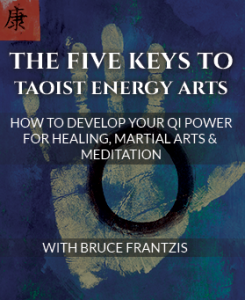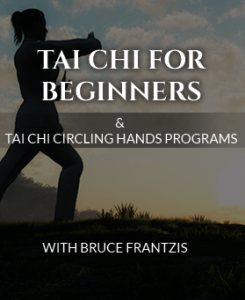Part 2 of 2 (Click here for part 1)
The first step in getting physicians to recommend tai chi to their patients is to make sure that you have enough basic knowledge so that you can accurately educate them about tai chi and to have good leave-behind material both for the physician and for their patients.
In most cases, you cannot expect to get much time with physicians, so any materials you give them will need to be very clear and succinct. Having more detailed, back up material is needed, but there should be an expectation that many would only read the summary and spot check the rest. It is important for the material to be accurate since if they look up a statement and find it checks out they will feel more confident with the rest of the material. If not they will not consider it credible.
We hope that the research being compiled on the Energy Arts website will provide the foundation for such material. Eventually the intention is to provide Energy Arts Certified Instructors material to use. This material would include, summary information targeted to the specific type of physician and information about the instructor and their tai chi classes. One component would need to be flyers the physician could give to the patients themselves.
At some point in the future, Energy Arts will likely format the information in the research section of its website into a brochure that can be left behind for physicians and their patients.
Working with Physicians on Medical Research
In conjunction with promoting tai chi for health to physicians and their patients, it will be very helpful if at least some Energy Arts certified instructors become involved in research projects to investigate the benefits of their classes. This will help provide confidence that they can in fact help their students achieve measurable health benefits and will show that we are making a good faith effort to demonstrate that our classes really provide the value that we believe they do. As I have already organized and carried out a small study with a local neurologist on the benefits of tai chi for Parkinson’s I know that this type of research really can be done. I plan on expanding on this work and hope to involving other energy arts certified instructors in other research projects.
Participating in medical research not only will provide the results that, in the long term, will demonstrate to what extent tai chi is beneficial, it also helps to start important relationships with physicians. For instance, South Coast Medical Center’s movement disorders program continues to list my tai chi for Parkinson’s disease class on their website and the neurologist I worked with on the study continues to recommend my tai chi class to his many of his patients.
The Economics of Tai Chi for Health
Tai chi offers the potential to save billions of dollars per year in health care savings. For instance by 2020 the medical costs due to falls among the 55 million US seniors age 65+ are expected to grow to over 54.9 billion, about $1,000 per person. In the studies done so far, tai chi reduced the risk of falls by about 50%. If this reduction can be maintained, then for a typical person age 65+, practicing tai chi would save
$500 per person, just in savings from falls. These savings would likely be even greater since practitioners of tai chi might be expected to have fewer injuries in the falls they do have.
Of course, there are many other well-documented health benefits of tai chi, which would likely result in significant direct and indirect health costs. In fact a strong argument can be made that for many groups of people, such as individuals age 65+, Medicare or the person’s health care insurance, will save far more in health care costs than the tai chi classes will cost. This suggests the possibility that they might be interested in helping to promote tai chi. They could help in a several ways ranging from subsidizing tai chi classes to providing free advertising for classes. Research into tai chi for health will help make such arguments all the more compelling.
Summary
Scientific research into the health benefits of tai chi can lead to a much greater utilization of tai chi as a complementary health practice. We can help make this occur by helping to make more physicians and their patients aware of these findings. There is an excellent opportunity for tai chi instructors to expand their classes and help people improve their health by talking to physicians.
David Bendall teaches weekly classes in California and has studied with Bruce since 1987. Not surprisingly, David is especially interested in the health benefits of tai chi and chi gung. He worked on a study that observed the benefits of tai chi for people with Parkinson’s disease in 2004 and looks forward to helping EA develop studies to help get the word out about chi practices.





0 Comments